Exchange between Portuguese and the Bantu Languages The Languages of Angola
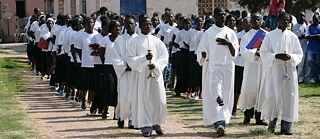
The Portuguese spoken in Angola since colonial times is still peppered with black African expressions, which are part of the Bantu experience and only exist in Angola's national languages. José Luís Mendonça on “Portungolano” and its echo in the Portuguese language.
The relationships between culture, language, economic thinking and action in Angola are as complex as they are fascinating. The Portuguese language in Angola is not a diamond that has been washed and honed in five centuries of colonial linguistic transmigration. It is rather more like kimberlite, salvaged from the depths of history and mineralized by the mouth of the people. Angolan society is a living, secular body in whose genetics the socio-cultural material of Western culture has been incorporated by the process of colonization, thus generating new characteristics. The Portuguese spoken in Angola searches the grammatical system of the Bantu languages for its functional structure. It is strongly shaped by black African influences, which are part of the Bantu experience and exist only in the national languages of Angola. They are part of everyday communication among Angolans, who interact with them when using other non-native languages, and in a number of ways that make up the variants of Angolan Portuguese.
This phenomenon is called “transculturality”. It is marked by an intense cultural exchange that is characteristic of the life of people in Angola. Through this exchange, Angola has become a typical example of a state in which cultural diversity is a parameter of social cohesion. Here I shall analyse the Portuguese and Angolan Bantu languages in their communicative use within this econo-cultural prism. Angolans have two inheritances from the clash of civilisations that took place in their fifteenth century. The first is the Portuguese language, which today dominates communication. The second is the versatile map of a country with peoples speaking different Bantu languages.
Angola and Luanda: Economic Origin
There is a term from this legacy that is immensely emotional for all Angolans: “Angola”. It is rooted in the term “ngola”, the title of one of the most powerful Ambundus (editor's note: an ethnic group in Angola) in the kingdom of Ndongo when the Portuguese gained influence there in the second half of the sixteenth century. Ngola A Kiluanje (1515-1556) was the group’s chieftain and most famous ruler, known as Ngola A Kiluanje Inene, “the Great Ngola”. He founded a dynasty that later became known as the Kingdom of Angola. Ndongo owed allegiance to the ancient kingdom of Congo until Ngola A Kiluange Inene declared himself independent. In 1626, the Portuguese subjugated the kingdom of Ndongo. The term “ngola”, in turn, has its root in “ngolo”, which in the language of the Ambundu, Kimbundu, means “strength”. The same term in Kikongo, the language of the Bakongo people, means “severity, strength, steadfastness, robustness”. The Portuguese inferred that a “ngola” was a person who had power, who was powerful. From this etymological analysis, we can conclude that the name “Angola” originated from a Bantu word referring to a strong ore: iron. Later, the same word also stood for strength and power. In the end, the Portuguese called the whole country “Angola”.“Through this exchange, Angola has become a typical example of a state in which cultural diversity is a parameter of social cohesion.”
Portuangolan: an Expression of Bantu Lusophony
Where once there had been kingdoms, now conquered by Portugal, the Portuguese brought the Angolans a common language, both for their own use amongst themselves and with the outside world. In his analysis of this sociocultural phenomenon, the journalist Sebastião Coelho noted: “Like a spell turned against the magician, language, the chief weapon of the coloniser for imposing his rule, has, paradoxically, become the most significant instrument of decolonisation and the fundamental factor of national unity in Angola. Thus a quarter of a century of independence has contributed more to the diffusion and anchoring of Portuguese than five centuries of colonial rule were able to do.”This is the same language in which I speak and write, and in which Dom Afonso II of Portugal wrote his Last Will and Testament on 27 June 1214. And then again it isn’t. It archaically preserves within itself the yearning of the seafarers who brought with them scurvy and rosaries. Today it is both the same language as and a different language from what I would like to call Portuangolan, our achievement and our heritage: a natural bantu-lusophone expression of a process of linguistic change that today also incorporates the francophone influence of Angola’s border region and the carioca of Rio de Janeiro in our transcultural dialogue.
“Language, the chief weapon of the coloniser for imposing his rule, has, paradoxically, become the most significant instrument of decolonisation and the fundamental factor of national unity in Angola.”
The Portuguese dictionary contains several words that reflect Angola’s historical contribution to the enrichment of the symbolic and imaginative universe of the Portuguese language. Many of them relate to trade or economic activity in general. These include words such as jindungo (long, very hot chili peppers), minhoca (earthworm), múcua (fruit of the baobab tree), semba (dance), bué (much), alembamento (marriage proposal with dowry), sanzala (rural village) and jinguba (peanuts). This short list illustrates linguistic solutions that came of the coexistence of these languages, a centuries-long diffusion of Portuguese into the other languages of the Angolan area.
Language and Market
In his analysis, Sebastião Coelhos mentions an important fact: “After the Portuguese language was declared the ‘official language’ in the Declaration of Angola's Independence on 11 November 1975, it quickly became established. Its former standing as the ‘language of the coloniser’ was soon transformed into that of the ‘common language’ and soon thereafter of the predominant language, which has become an instrument of literacy. By the beginning of the third millennium, it had gained the status of ‘mother tongue’ for more than 20 per cent of Angolans (today we may assume 70 per cent). This linguistic dominance has been consolidated by trade in imported goods for everyday use. The purchase and sale of these products in the Camões language, informally, on the doorstep or at the local distributor, is responsible for the spread of the Portuguese language and has been instrumental in maintaining the feeling of being an Angolan.”In Angola, we can observe a trade-related rejuvenation or Bantu or renewal of the official language, a cross-penetration of national languages and Portuguese. The creativity of the people thus responds to the need to name new occupations, activities or goods of the informal market. For example, the very popular chicken sandwich, the magoga. When the first mobile phones arrived on the Angolan market, in those days still with antennae, the sandwiches were called “Motorola” – because a fried chicken thigh peeped out from under the bread crust like antennae. In the wake of the Brazilian telenovela Roque Santeiro and the opening of the largest open-air market of the same name in southern Africa, new words emerged such as zungueiro (traveling salesman), candonga (in Kikongo, smart or clever, but also beginner, newbie, student, apprentice; in Kimbundu, cunning) and quínguila (street money changers for dollars). In districts where oral sales contracts are common, terms such as kupapata (motorcycle taxi), kixikila (lending money to colleagues), bumbar (working), and tunga ngó (building without permission) sprung up. The latter two are from colonial times and are now dying out.
Transculturality in Migration and Border Areas
Transculturality is also evident in the exchange between ethnic groups. Interesting here is the word gasosa, which originally stood for lemonade. In Angola, it is now present in almost all economic and financial spheres of life. It describes the practice of paying fines and administrative funds in reduced form as bribes directly to the contact person in the public administration. Gasosa is closely linked to the phenomenon of the so-called cabritismo, which refers to the proverb: “The goat eats where it is tethered.” Put positively, gasosa represents an informal redistribution of income throughout the social fabric. It stimulates the national economy and the money flow. It is noteworthy that exactly this term is also common among the police in Namibia, the Democratic Republic of the Congo and the Republic of South Africa. Neighbouring countries left gasosa untranslated and it came in this form into Angolan Portuguese.
In addition to the internal influence on the southern region, globalisation and the permeability of the borders has also led to a world-wide opening up of gastronomy. In the informal market a word emerged that had its origins in the migrations from French-speaking Africa: cabrité, pieces of fried goat meat. Today it is not uncommon to hear the word in Luanda: “I'm going to have a fahita (an Arabic flat bread sandwich introduced by the Lebanese) with kebab and hummus.”
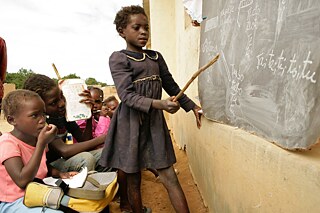
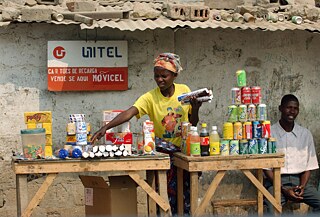
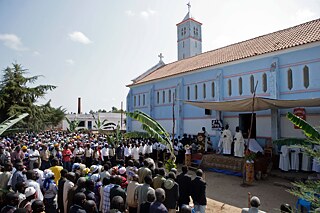
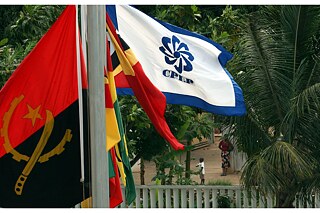
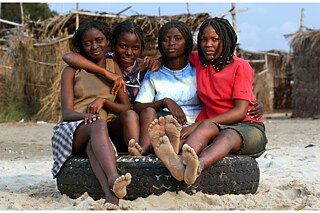
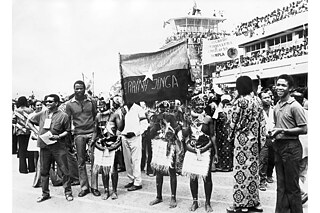
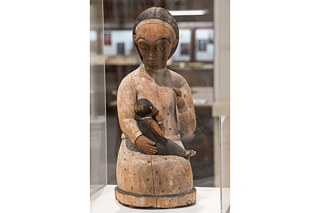
!['Map of Mid. And South Africa', 1919. Creator: George Philip & Son Ltd. 'Showing European possessions at outbreak of war', [the First World, 1914]. From "The History of the Great European War: its causes and effects", Vol. VIII, by W. Stanley Macbean Knight. [Caxton Pulishing Company, Limited, London, 1919]](/resources/files/jpg1116/bild-8-neu-formatkey-jpg-w320r.jpg)
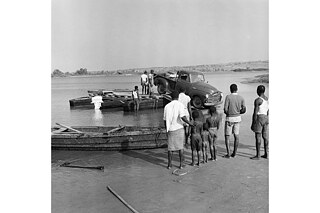
0 0 Comments